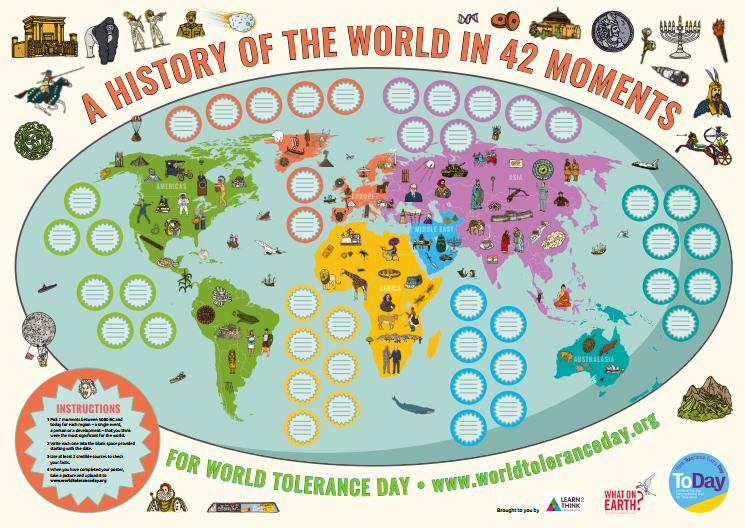Lesson planThis giant colourful poster activity, produced with ‘What on Earth Books?’, asks children to step back and connect the dots of the past.
On the poster they will fill in what they consider to be the 42 key moments of history, 7 for each region of the world. |
The goal of this activity is to broaden children’s perspectives and get them to acknowledge the role all cultures have played in creating the world we live in today.
As Churchill paraphrased in 1948, those who fail to learn from history are condemned to repeat it. In a world facing challenges that demand collective action we must find ways to combat this failure. Human behaviour changes but not human nature. Isn’t history then arguably the most reliable path to understanding the present and anticipating the problems of the future?
This excercise helps children to understand how what the most important elements of history are in one place or culture, may be completely different in another. This helps them to learn perspective and build empathy, key building blocks in the development of a tolerance mind-set.
As Churchill paraphrased in 1948, those who fail to learn from history are condemned to repeat it. In a world facing challenges that demand collective action we must find ways to combat this failure. Human behaviour changes but not human nature. Isn’t history then arguably the most reliable path to understanding the present and anticipating the problems of the future?
This excercise helps children to understand how what the most important elements of history are in one place or culture, may be completely different in another. This helps them to learn perspective and build empathy, key building blocks in the development of a tolerance mind-set.
